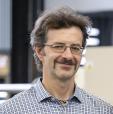Funding commitment for ANSTO's Innovation Precinct
ANSTO’s Innovation Precinct welcomes NSW Government’s $12.5 commitment funding.

Showing 421 - 440 of 1386 results
ANSTO’s Innovation Precinct welcomes NSW Government’s $12.5 commitment funding.
Research collaboration with University of Sydney focuses on a personalised approach to cancer treatment.

ANSTO offers reliable and traceable calibration services for radiation survey meters, contamination monitors and electronic personal dosimeters.

Nuclear science is crucial to understanding our universe, our world and ourselves at the atomic level. If we can understand how atoms get together, interact, or can be best combined with other atoms, new, more efficient materials and drugs can be developed.

PFAS chemicals in packaging pose serious environmental and health risks, but Australia’s packaging industry is leading the way to phase them out. Backed by cutting-edge nuclear science, industry-led action is creating safer packaging solutions for all Australians.

The Biosciences group of researchers at ANSTO supports the development and translation of radiopharmaceuticals to improve human health.

ANSTO’s suite of infrastructure and capabilities is ideally suited for solving problems relating to the development and characterisation of advanced materials, and the engineering of manufactured components and processes.


Southern Sydney Innovation Network (SSIN) is calling all innovators, creators, ideas people and entrepreneurs in Southern Sydney to become part of this community driven, not-for-profit group supporting startups and entrepreneurs.

Datasets from the Aerosol Sampling Program.
Seven of Australia’s top nuclear medicine professionals have been briefed on ANSTO’s plans to manage radioactive waste, as well as to support nuclear medicine innovation in Australia.

Role at ANSTO

In space, without the protection of the magnetosphere, the type and dose of radiation is considerably different to what is naturally experienced on earth. However, it is the secondary particles of lower energies created when galactic and cosmic radiation interacts with shielding that is of concern for astronauts.

In collaboration with the French National Institute of Health and Medical Research (INSERM) and the French International Space Agency (CNES), ANSTO scientists are undertaking research on the radiobiological effects of secondary particles that are created when radiation interacts with the shielding on the International Space Station.

The radiography program focuses on the development of Neutron Capture Enhanced Particle Therapy (NCEPT) from initial preclinical work, to clinical trials and finally commercial translation and licencing.